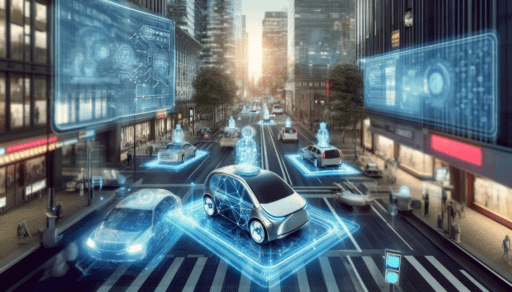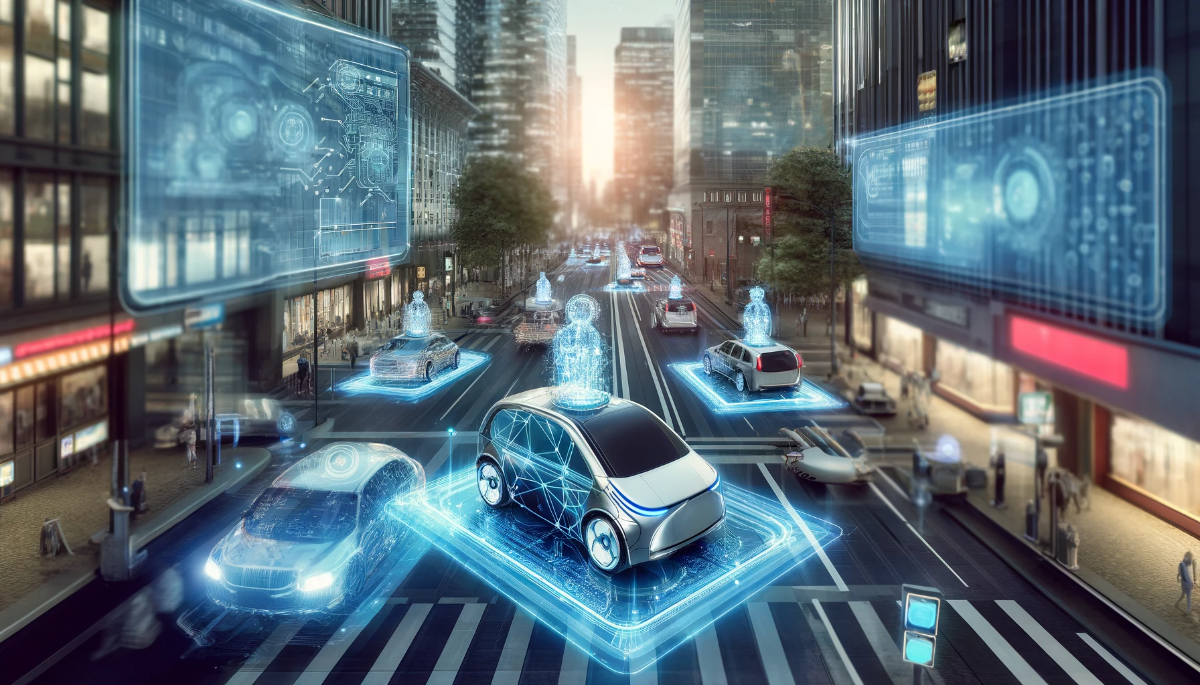Artificial Intelligence (AI) and autonomous vehicles are two cutting-edge technologies that are revolutionizing the transportation industry. AI refers to the ability of machines to perform tasks that would typically require human intelligence, such as perception, reasoning, learning, and decision-making. Autonomous vehicles, on the other hand, are vehicles that can operate without human intervention, using AI algorithms to navigate and make decisions on the road.
The history of AI in transportation can be traced back to the 1980s when researchers began exploring the use of AI techniques in vehicle control systems. However, it was not until recent years that significant advancements in AI technology and computing power have made autonomous vehicles a reality. Today, companies like Tesla, Waymo, and Uber are leading the way in developing and deploying autonomous vehicles on public roads.
The importance of AI in the development of autonomous vehicles cannot be overstated. AI algorithms enable autonomous vehicles to perceive their surroundings, make decisions based on real-time data, and navigate complex road conditions. Without AI, autonomous vehicles would not be able to operate safely and efficiently. As a result, AI is a critical component in the advancement of autonomous vehicle technology.
Key Takeaways
- AI is being integrated into autonomous vehicles to improve their functionality and safety.
- Machine learning plays a crucial role in enabling autonomous vehicles to learn and adapt to their environment.
- The benefits of AI in autonomous vehicles include increased safety, efficiency, and reduced traffic congestion.
- Data collection is essential for AI-enabled autonomous vehicles to make informed decisions and improve their performance.
- The challenges of implementing AI in autonomous vehicles include technical limitations, regulatory hurdles, and ethical concerns.
How AI is Changing the Future of Transportation
The current state of transportation is characterized by traffic congestion, accidents, and inefficiencies. However, advancements in AI technology are poised to transform the way we travel. AI-enabled transportation systems have the potential to improve safety, reduce traffic congestion, and enhance the overall passenger experience.
One example of an AI-enabled transportation system is intelligent traffic management. By using AI algorithms to analyze real-time traffic data, transportation authorities can optimize traffic signal timings and manage traffic flow more efficiently. This can help reduce congestion and improve overall traffic flow.
Another example is autonomous ride-sharing services. Companies like Uber and Lyft are already testing autonomous vehicles for ride-sharing purposes. These vehicles use AI algorithms to navigate and pick up passengers, providing a convenient and cost-effective transportation option.
The Benefits of Integrating AI in Autonomous Vehicles
Integrating AI in autonomous vehicles offers numerous benefits across different aspects of transportation.
Improved safety and reduced accidents: AI algorithms can analyze real-time data from sensors and cameras to detect and respond to potential hazards on the road. This can help prevent accidents and reduce the number of fatalities and injuries caused by human error.
Increased efficiency and reduced traffic congestion: AI-enabled autonomous vehicles can optimize their routes and speeds based on real-time traffic data, reducing congestion and travel times. Additionally, autonomous vehicles can communicate with each other to coordinate movements, further improving traffic flow.
Enhanced passenger experience and comfort: Autonomous vehicles equipped with AI technology can provide a more comfortable and enjoyable ride experience. AI algorithms can adjust temperature, lighting, and entertainment options based on passenger preferences, creating a personalized and relaxing environment.
Reduced environmental impact: By optimizing routes and speeds, AI-enabled autonomous vehicles can reduce fuel consumption and emissions. This can help mitigate the environmental impact of transportation and contribute to sustainability efforts.
The Role of Machine Learning in Autonomous Vehicles
Machine learning is a subset of AI that focuses on enabling machines to learn from data without being explicitly programmed. In the context of autonomous vehicles, machine learning plays a crucial role in enabling vehicles to perceive their surroundings, make decisions, and improve their performance over time.
Machine learning algorithms are used in autonomous vehicles to process sensor data, such as images from cameras or readings from lidar sensors. These algorithms can learn to recognize objects, such as pedestrians, cyclists, or other vehicles, and make decisions based on this information.
One example of a machine learning algorithm used in autonomous vehicles is convolutional neural networks (CNNs). CNNs are designed to process visual data, such as images or video frames, and extract meaningful features. By training CNNs on large datasets of labeled images, autonomous vehicles can learn to recognize and classify objects in real-time.
Another example is reinforcement learning, a type of machine learning that involves training an agent to interact with an environment and learn optimal actions through trial and error. Reinforcement learning algorithms can be used to train autonomous vehicles to navigate complex road conditions and make decisions based on rewards or penalties.
The Importance of Data Collection in AI-Enabled Autonomous Vehicles
Data collection is a critical component of AI-enabled autonomous vehicles. Autonomous vehicles collect vast amounts of data from various sensors, such as cameras, lidar, radar, and GPS. This data is then used to improve the vehicle’s perception, decision-making, and overall performance.
The types of data collected by autonomous vehicles include images, point clouds, sensor readings, and GPS coordinates. This data provides valuable information about the vehicle’s surroundings, such as the position and movement of other objects on the road.
Data is used to improve autonomous vehicle performance in several ways. First, it is used to train machine learning algorithms that enable the vehicle to recognize and classify objects in real-time. By feeding labeled data into these algorithms, the vehicle can learn to identify pedestrians, cyclists, traffic signs, and other relevant objects.
Second, data is used for testing and validation purposes. Autonomous vehicle developers use real-world data to simulate different driving scenarios and evaluate the performance of their algorithms. This helps identify potential weaknesses or areas for improvement in the vehicle’s perception and decision-making capabilities.
However, collecting and managing large amounts of data pose significant challenges. Autonomous vehicles generate terabytes of data per hour, which requires robust storage and processing capabilities. Additionally, ensuring the privacy and security of this data is crucial to protect sensitive information about passengers and their surroundings.
The Challenges of Implementing AI in Autonomous Vehicles


Implementing AI in autonomous vehicles comes with various challenges that need to be addressed for widespread adoption.
Technical challenges: One of the main technical challenges is the hardware and software limitations of autonomous vehicles. AI algorithms require significant computational power, which can be challenging to achieve in a vehicle’s limited space and power constraints. Additionally, ensuring the reliability and robustness of AI algorithms is crucial to prevent system failures or malfunctions.
Regulatory challenges: The deployment of autonomous vehicles raises regulatory challenges related to safety standards and liability issues. Establishing clear safety standards and regulations for autonomous vehicles is essential to ensure their safe operation on public roads. Additionally, determining liability in the event of accidents or malfunctions involving autonomous vehicles is a complex legal issue that needs to be addressed.
Public perception and acceptance: Public perception and acceptance of autonomous vehicles are critical for their widespread adoption. Many people have concerns about the safety, reliability, and ethical implications of autonomous vehicles. Addressing these concerns through education, transparency, and public engagement is crucial to gain public trust and acceptance.
The Impact of AI on Driverless Car Safety
AI has the potential to significantly improve safety in autonomous vehicles compared to human-driven vehicles. Human error is a leading cause of accidents on the road, and AI algorithms can help mitigate this risk by providing real-time perception, decision-making, and control capabilities.
AI algorithms can analyze sensor data from cameras, lidar, radar, and other sensors to detect potential hazards on the road. They can identify pedestrians, cyclists, other vehicles, and road signs with high accuracy and react faster than human drivers. This can help prevent accidents caused by distracted driving, fatigue, or other human factors.
Furthermore, AI-enabled safety features can enhance the overall safety of autonomous vehicles. For example, autonomous emergency braking systems can detect imminent collisions and automatically apply the brakes to prevent or mitigate the impact. Lane-keeping assist systems can help prevent lane departure accidents by automatically steering the vehicle back into its lane.
Comparisons between the safety records of autonomous and human-driven vehicles have shown promising results for AI-enabled autonomous vehicles. According to a study by the Insurance Institute for Highway Safety, autonomous vehicles equipped with advanced driver assistance systems have significantly lower crash rates compared to the same models without these systems.
The Ethical Implications of AI in Autonomous Vehicles
The development and deployment of AI-enabled autonomous vehicles raise important ethical considerations that need to be addressed. Autonomous vehicles are faced with complex ethical dilemmas that involve making decisions in potentially life-threatening situations.
For example, consider a situation where an autonomous vehicle needs to make a split-second decision to avoid a collision. Should the vehicle prioritize the safety of its occupants or the safety of pedestrians or cyclists? This is a challenging ethical dilemma that requires careful consideration and public input.
Another ethical concern is the potential for bias in AI algorithms. If AI algorithms are trained on biased data, they can perpetuate and amplify existing biases in society. For example, if an autonomous vehicle’s object recognition algorithm is biased against recognizing certain types of pedestrians, it could lead to discriminatory outcomes.
Addressing these ethical concerns requires a multidisciplinary approach involving engineers, ethicists, policymakers, and the public. Developing transparent and accountable AI algorithms, establishing clear guidelines for decision-making in critical situations, and ensuring fairness and inclusivity in AI systems are crucial steps towards addressing these ethical implications.
The Future of AI-Enabled Autonomous Vehicles
The future of AI-enabled autonomous vehicles holds great promise for transforming transportation as we know it. Predictions for the future include widespread adoption of autonomous vehicles, increased connectivity between vehicles and infrastructure, and advancements in AI technology.
One potential advancement is the development of fully autonomous vehicles that can operate in any road condition without human intervention. These vehicles would be capable of navigating complex urban environments, adverse weather conditions, and challenging terrains.
Advancements in AI technology, such as improved perception algorithms and more powerful computing systems, will further enhance the capabilities of autonomous vehicles. This will enable vehicles to better understand and respond to their surroundings, making them safer and more efficient.
Challenges and opportunities lie ahead for the future of AI-enabled autonomous vehicles. Technical challenges, such as improving the reliability and robustness of AI algorithms, need to be addressed. Regulatory frameworks and safety standards need to be established to ensure the safe operation of autonomous vehicles. Additionally, public acceptance and trust in autonomous vehicles need to be fostered through education and transparency.
The Promising Future of AI in Autonomous Vehicles
In conclusion, AI is playing a crucial role in the development of autonomous vehicles, revolutionizing the transportation industry. AI-enabled autonomous vehicles offer numerous benefits, including improved safety, increased efficiency, enhanced passenger experience, and reduced environmental impact.
Machine learning algorithms are key components of autonomous vehicles, enabling them to perceive their surroundings, make decisions, and improve their performance over time. Data collection is also essential for the development and operation of AI-enabled autonomous vehicles, providing valuable information for training and testing purposes.
However, implementing AI in autonomous vehicles comes with challenges related to hardware and software limitations, regulatory frameworks, and public perception. Addressing these challenges is crucial for the widespread adoption of autonomous vehicles.
The future of AI-enabled autonomous vehicles holds great promise for transforming transportation. Advancements in AI technology and increased connectivity between vehicles and infrastructure will further enhance the capabilities of autonomous vehicles. Continued research and development in AI-enabled transportation are essential for realizing this promising future.
If you’re interested in the integration of AI in autonomous vehicles, you may also find this article on data center security best practices for physical and digital measures intriguing. It provides valuable insights into securing information and protecting data centers from potential threats. Check it out here.
FAQs
What is AI?
AI stands for Artificial Intelligence. It is a branch of computer science that deals with the creation of intelligent machines that can perform tasks that typically require human intelligence, such as visual perception, speech recognition, decision-making, and language translation.
What are autonomous vehicles?
Autonomous vehicles, also known as self-driving cars, are vehicles that can operate without human intervention. They use a combination of sensors, cameras, and software to navigate roads, avoid obstacles, and make decisions about driving.
How is AI integrated into autonomous vehicles?
AI is integrated into autonomous vehicles through the use of machine learning algorithms and computer vision technology. These technologies allow the vehicle to learn from its environment and make decisions based on that information.
What are the benefits of integrating AI into autonomous vehicles?
Integrating AI into autonomous vehicles can lead to increased safety, improved efficiency, and reduced traffic congestion. AI can help vehicles make better decisions, avoid accidents, and optimize routes to reduce travel time.
What are the challenges of integrating AI into autonomous vehicles?
Some of the challenges of integrating AI into autonomous vehicles include ensuring the safety and reliability of the technology, addressing ethical concerns related to decision-making, and navigating regulatory and legal issues.
What is the current state of AI integration in autonomous vehicles?
AI integration in autonomous vehicles is still in the early stages, but there are several companies working on developing and testing autonomous vehicles with AI technology. Some of these companies include Tesla, Waymo, and Uber.







